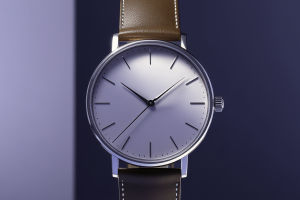Drinking tea is more than a habit in East Frisia; it’s a cherished tradition. Nestled in the northwestern part of Germany, this tranquil region boasts a unique title.
it’s home to the highest tea consumption in the world. Surpassing even the renowned tea-drinking cultures of the UK and China.
East Frisians consume an average of 300 liters of tea per person annually, marking them as the “undisputed tea world champions,” according to the German Tea and Herbal Infusions Association.
A Unique Ceremony
At the heart of this delightful culture lies an elaborate tea ceremony that offers a sensory experience. The director of the Bünting Tea Museum in the charming town of Leer, Celia Brandenburger, highlights that the simple act of drinking tea is transformed into a ritual.
This involves layering rock sugar at the bottom of a delicate porcelain cup and pouring freshly brewed black tea over it. The delightful sound and aroma that accompany this process set the stage for a unique tasting experience known locally as “Wulkje,” or "small clouds."
Three Phases
The experience unfolds in three distinct phases. The first sip offers a rich sweetness from the cream, followed by the robust flavor of the tea in the second.
Finally, the lingering sweetness of the dissolving rock sugar completes the experience. East Frisians can be seen enjoying multiple cups, with the ceremonial pouring done primarily by the host. This provides a cozy atmosphere of friendship, fellowship, and warm conversation.
A Daily Ritual
Tea drinking is woven into the fabric of daily life in East Frisia. Brandenburger fondly recounts teaching tea ceremonies even to children at daycare centers, showing how intrinsic this practice is to local culture.
Mornings, afternoons, and evenings often call for a cup of tea, creating a comforting routine that underscores the importance of tea time, often lasting several moments throughout the day.
Cultural Heritage
In recognition of its significance, East Frisian tea culture was inscribed as part of Germany's intangible cultural heritage in 2016. The local tea houses proudly display this regional specialty, attracting tourists eager to dive into this whimsical world of flavors.
West Frisia's connection to tea is also evident beyond its borders—when royal guests arrived in Berlin, they were treated to a festive banquet that included East Frisian tea in various innovative forms.
A Rich History
While tea may seem like a modern staple of the region, its roots stretch back to the 17th century when Dutch traders first introduced it to Europe. The luxurious drink was once enjoyed solely by the affluent.
but this changed dramatically following the British tea cultivation in Assam, India, which made it accessible to the masses. This pivotal moment was the beginning of what is now referred to as the East Frisian tea ceremony.
From being a marker of identity to forming the centerpiece of many social gatherings, East Frisian tea is more than just a beverage; it embodies the region’s warmth and hospitality.
A cup of tea in East Frisia is a delightful journey for the senses, transforming each sip into an expression of heritage and community. Every drop signifies a celebration of tradition and connection within this charming corner of Germany.
East Frisian Tea: The German Tea Culture You’ve Never Heard Of
Video by DW Food


